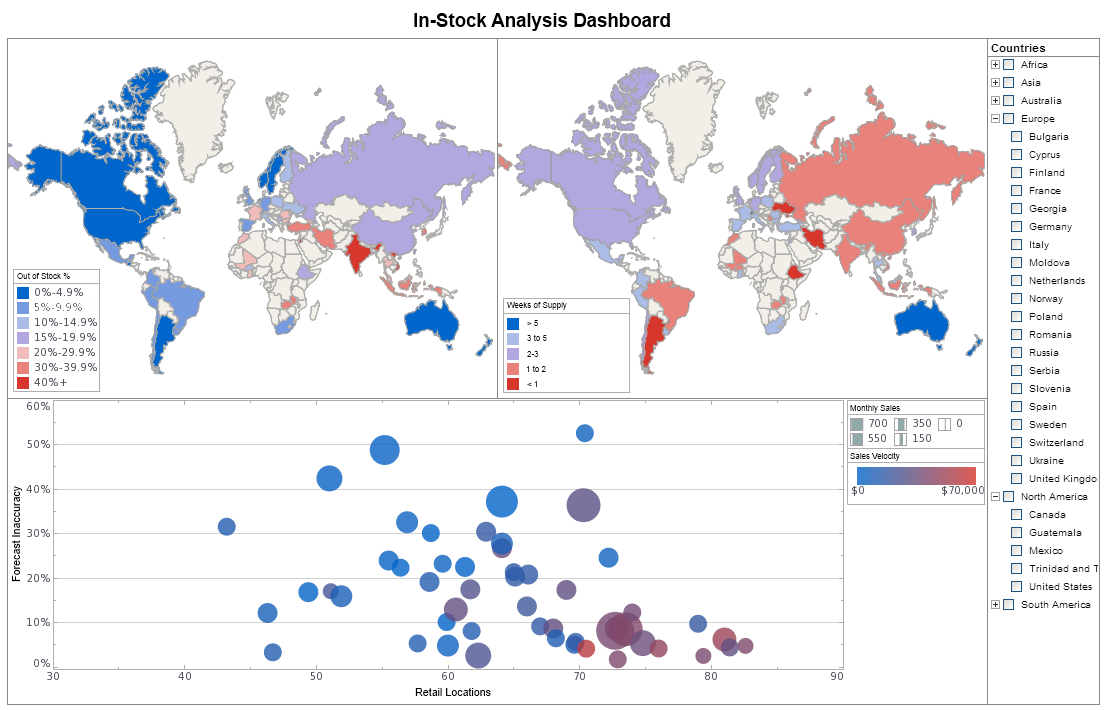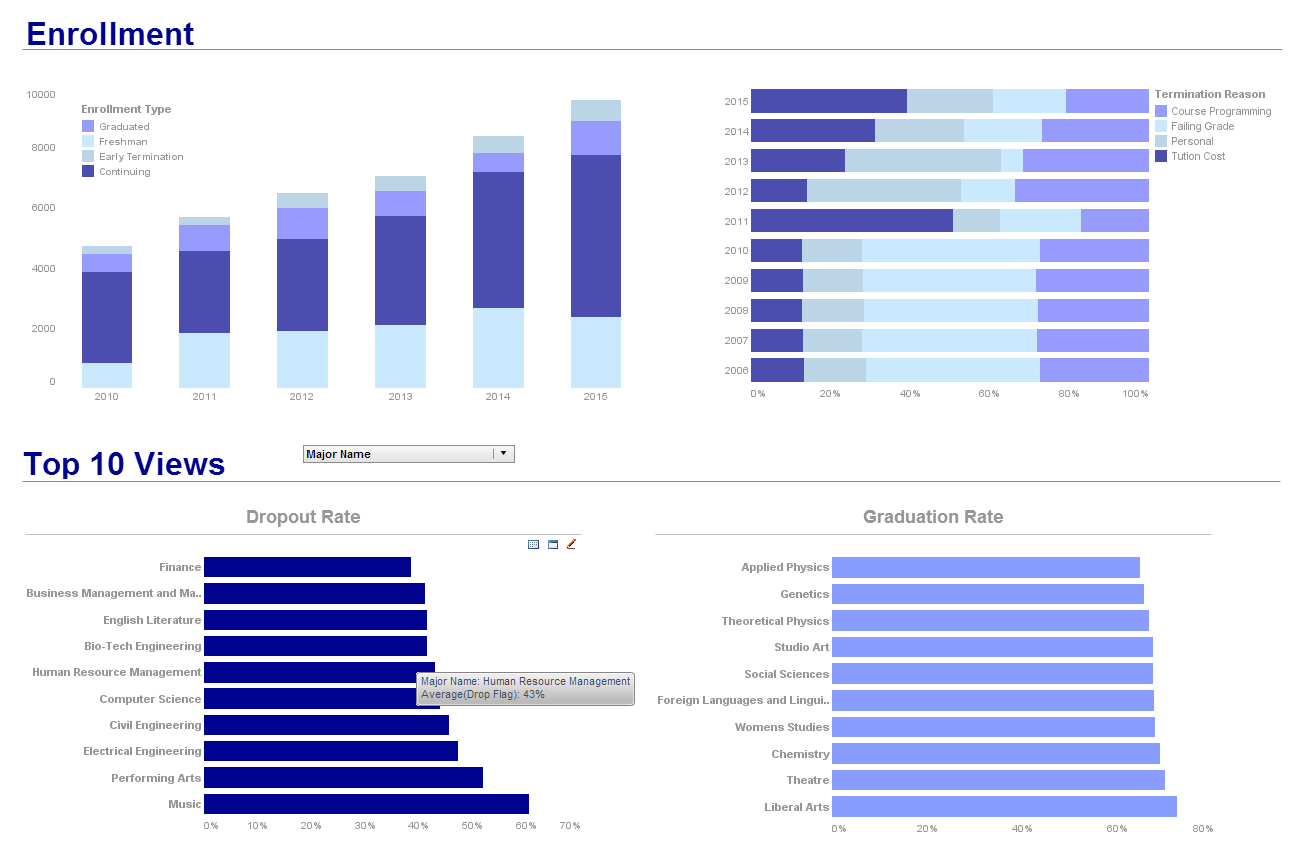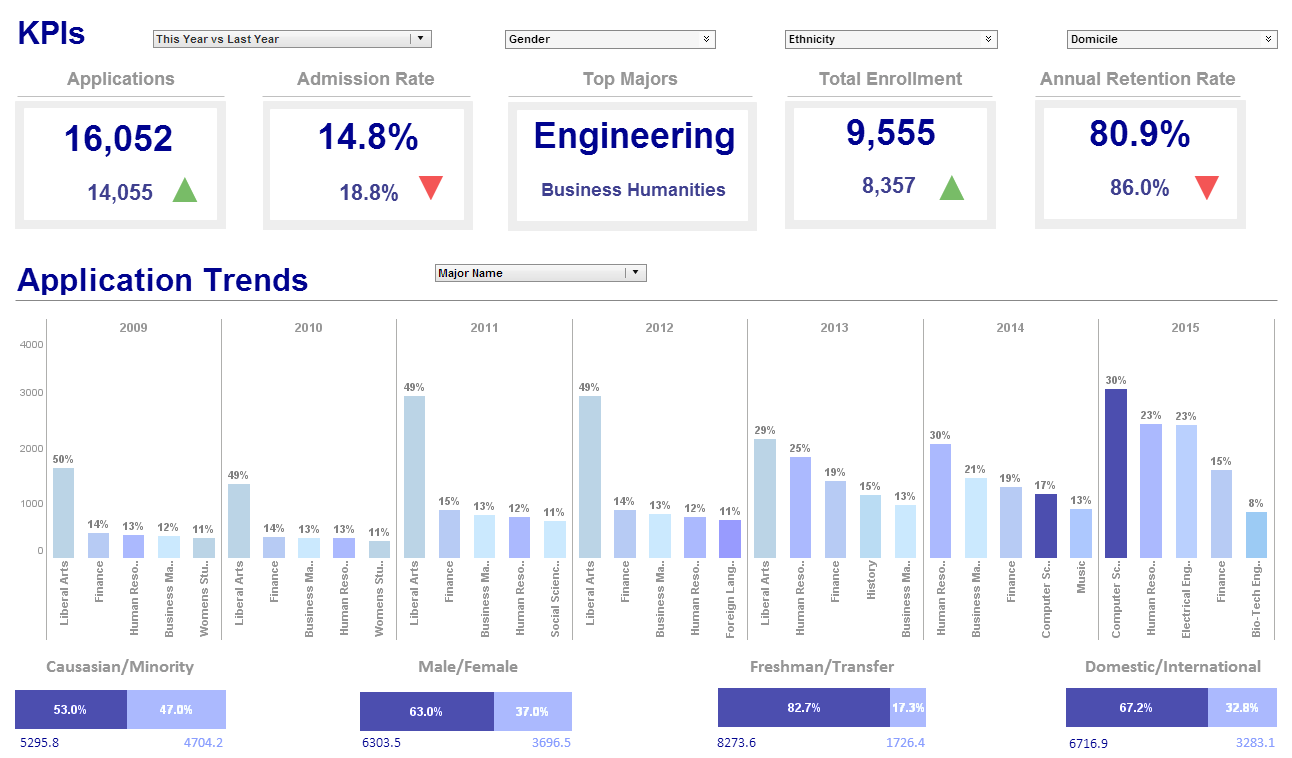A BI Application That Is Easily Deployed and Used
Are you looking for a BI application that is powerful, flexible, and easy to use? Since 1996 InetSoft has been making BI software that is easy to deploy and easy to use. Its unique data mashup capabilities enable unified views of corporate performance and maximum self-service.

Why InetSoft?
InetSoft's BI application is easy enough to be:- Deployed in just weeks
- Learned by end users with minimal training
- Used by any executive without the aid of IT
- Adaptable to changing data and business needs
- Used for data exploration through visualization
- Capable of maximum self-service
- Attract the attention of executives
- Meet the demands of power users
- Scale up for organizations of any size
Evaluate StyleBI from InetSoft. It's Easy. Agile. & Robust.
Register for more info and to download free eval software
A Dairy Farm Collective's Use of InetSoft's StyleBI for BI Dashboards and Analytics
In the rolling hills of Vermont, the Green Valley Dairy Collective (GVDC), a cooperative of 25 small-to-medium dairy farms, faced mounting pressures. Rising operational costs, fluctuating milk prices governed by Federal Milk Marketing Orders (FMMO), and increasing regulatory demands for sustainability and animal welfare threatened their viability. By 2024, the collective recognized that data-driven decision-making was no longer optional—it was essential. Enter InetSoft's StyleBI, an open-source business intelligence (BI) platform, which GVDC adopted to transform their operations through intuitive dashboards and advanced analytics. This narrative explores the technical journey of GVDC's implementation of StyleBI, detailing the architecture, integration, analytics capabilities, and measurable outcomes for a technical audience.
The Challenge: Data Silos and Operational Blind Spots
GVDC's farms, ranging from 50 to 500 cows, operated independently but shared common challenges: inefficient resource allocation, inconsistent milk yield tracking, and limited visibility into supply chain dynamics. Each farm used disparate systems—Excel spreadsheets, legacy farm management software, and IoT sensors for milk production and herd health. Data was fragmented, stored in silos like local SQL databases, CSV exports, and cloud-based IoT platforms. Compliance with FMMO regulations required precise milk classification (Class I for fluid milk, Class II for soft products, etc.), yet manual reporting was error-prone and time-consuming. Sustainability metrics, such as water usage and carbon footprint, were tracked sporadically, hindering grant applications for eco-friendly initiatives.
The collective needed a unified BI solution that could:
-
Aggregate heterogeneous data sources in real time.
-
Provide self-service dashboards for non-technical farmers.
-
Enable predictive analytics for yield optimization and cost forecasting.
-
Scale across farms without heavy IT overhead.
After evaluating tools like Tableau and Microsoft Power BI, GVDC chose StyleBI for its zero-client, web-based architecture, open-source flexibility, and robust data mashup capabilities. Its Java-based, lightweight footprint aligned with their limited IT resources, and the drag-and-drop interface promised accessibility for farmers with minimal technical training.
Technical Architecture and Deployment
StyleBI's deployment at GVDC leveraged its 100% web-based, J2EE-compliant architecture, hosted on a single on-premise Ubuntu server (16-core CPU, 64GB RAM) to ensure data sovereignty. The server ran Apache Tomcat as the application container, with StyleBI's small footprint (under 500MB) minimizing resource demands. The platform's compatibility with major browsers (Chrome, Firefox) ensured farmers could access dashboards from mobile devices or aging laptops, critical for fieldwork.
Data Integration and Mashup
The heart of StyleBI's utility lay in its patented Data Block technology, which enabled seamless data mashup from GVDC's diverse sources:
-
SQL Databases: Each farm's local MySQL database stored historical milk production, feed consumption, and labor costs. StyleBI's JDBC connectors pulled this data in real time.
-
IoT Sensors: Milk yield monitors and herd health sensors (e.g., Fitbit-like devices for cows) transmitted data to a cloud-based MQTT broker. StyleBI's JSON/REST API connector ingested this stream, transforming it into analytic-ready blocks.
-
CSV Exports: FMMO compliance reports and market price data, stored as CSVs, were imported via StyleBI's file-based ingestion pipeline.
-
External APIs: Weather data from NOAA's API and commodity prices from USDA's Market News were integrated to correlate environmental factors with yields.
StyleBI's data transformation pipeline allowed GVDC's sole IT administrator to visually map these sources without writing SQL. Using the web-based designer, they created reusable Data Blocks, caching high-volume IoT data in-memory for performance (achieving 10x query speed gains, per InetSoft's documentation). This cache was updated incrementally on a 15-minute schedule, balancing real-time needs with server load.
Security and Access Control
Data security was paramount, given the cooperative's shared infrastructure. StyleBI's multi-tenant hosting model enabled role-based access control (RBAC). Farmers accessed only their farm's data, while collective managers viewed aggregated metrics. Single sign-on (SSO) was implemented via OAuth 2.0, integrating with GVDC's existing Active Directory. Automatic data encryption (AES-256) ensured compliance with Vermont's data protection laws.
Building Dashboards: Self-Service for Farmers
StyleBI's drag-and-drop interface empowered farmers to create dashboards without IT intervention, a critical feature for a cooperative with one IT staffer. The platform's visualization microservices supported tables, bar charts, line graphs, heatmaps, and geospatial maps, all rendered in HTML5 for cross-device compatibility.
Key Dashboards
- Milk Yield Dashboard:
-
Metrics: Daily milk production (gallons), per-cow yield, and Class I-IV classification.
-
Visuals: Time-series line graphs for yield trends, pie charts for class distribution, and heatmaps for farm comparisons.
-
Filters: Date ranges, cow breeds, and farms, enabling drill-down to individual herds.
-
Impact: Identified underperforming herds, leading to a 7% yield increase through targeted feed adjustments.
-
- Cost Management Dashboard:
-
Metrics: Feed, labor, energy, and transportation costs per gallon of milk.
-
Visuals: Stacked bar charts for cost breakdowns and trend lines for price forecasting.
-
Data Source: Merged SQL data with USDA market prices.
-
Impact: Reduced transportation costs by 12% by optimizing delivery routes.
-
- Sustainability Dashboard:
-
Metrics: Water usage (gallons per cow), methane emissions, and renewable energy adoption.
-
Visuals: Gauge charts for real-time water efficiency and geospatial maps for emission hotspots.
-
Data Source: IoT sensors and manual sustainability audits.
-
Impact: Secured a $200,000 state grant by demonstrating a 15% reduction in water usage.
-
- Predictive Analytics Dashboard:
-
Metrics: Forecasted milk yields and prices based on weather, feed quality, and historical trends.
-
Visuals: Scatter plots with regression lines and confidence intervals.
-
Analytics: StyleBI's what-if sliders allowed farmers to simulate feed cost changes.
-
Impact: Improved budgeting accuracy by 20%, mitigating price volatility risks.
-
Technical Features
-
Interactivity: Farmers used brushing to highlight data points (e.g., low-yield days) and drill-down to root causes (e.g., heat stress from NOAA data).
-
Self-Service: Non-technical users customized dashboards via StyleBI's web app, adding fields like "somatic cell count" for milk quality without IT help.
-
Scalability: The platform handled 10,000 daily IoT records and 5 million historical rows, with sub-second query times due to in-memory caching.
Analytics and Predictive Modeling
StyleBI's predictive analytics module, powered by visual what-if controls, enabled GVDC to move beyond descriptive reporting. Using historical yield data, weather patterns, and feed costs, the IT administrator built a linear regression model to forecast yields. The model, trained on StyleBI's data worksheet, achieved an R² of 0.82, indicating strong predictive power. Farmers used sliders to adjust variables (e.g., rainfall or feed type), visualizing potential outcomes in real time.
For cost forecasting, StyleBI's integration with R scripts (via JavaScript APIs) allowed the administrator to implement time-series ARIMA models. These predicted milk price trends with 85% accuracy over a 3-month horizon, helping GVDC negotiate better processor contracts.
Outcomes and Impact
By April, GVDC's StyleBI implementation yielded transformative results:
-
Operational Efficiency: Real-time dashboards reduced reporting time from 10 hours to 1 hour per week per farm, saving 468 hours annually across the collective.
-
Cost Savings: Route optimization and feed adjustments cut operational costs by 10%, or $150,000 annually.
-
Revenue Growth: Yield improvements and better FMMO compliance increased revenue by 8%, or $300,000 collectively.
-
Sustainability: Data-driven water and energy reductions earned grants and lowered environmental impact, aligning with consumer demand for green practices.
-
Adoption: 90% of farmers used dashboards weekly, with zero training required beyond a 30-minute tutorial, validating StyleBI's intuitive design.
Technical Reflections and Future Directions
StyleBI's open-source nature allowed GVDC to customize connectors for niche IoT devices, a flexibility proprietary tools lacked. However, the platform's reliance on Java posed minor challenges during initial Tomcat configuration, requiring a consultant for two days ($5,000 cost). Future enhancements include integrating machine learning for anomaly detection (e.g., early disease detection in herds) and exploring StyleBI's cloud deployment for scalability as GVDC grows.

